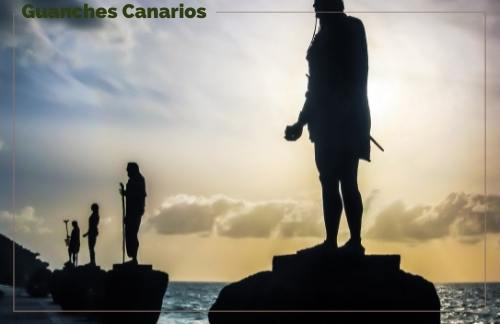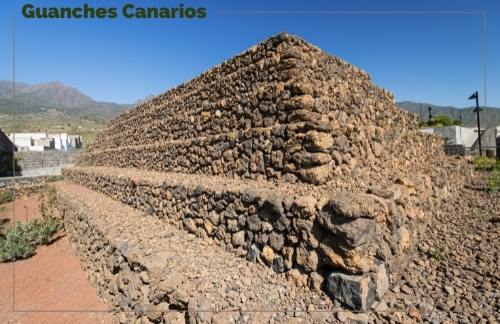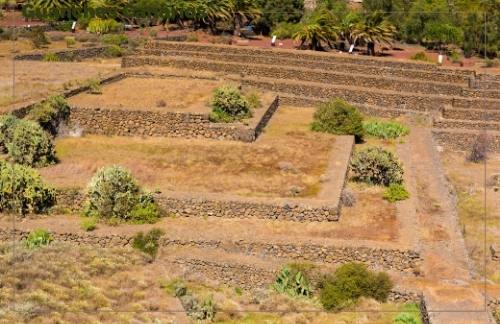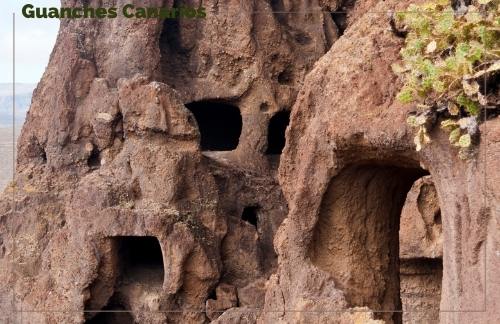Guanches Canarios Who were they? How did they live?
The Guanches were very important characters in the history of the Canary Islands, specifically in the area of Tenerife, being one of the first known civilizations in Spain become an important part of the history of this country. Next, you will be able to know their origin, how they lived, their culture and other aspects.
Origin of the Guanches
The Guanches were the inhabitants of everything that is known as the Canary Islands or also the Canary Islands, mainly in Tenerife, until the time of their disappearance, which occurred after the times of the conquest. These events are recorded in the fifteenth century.
The origin of the Guanches is related to the ancient tribes that inhabited the entire northern part of the African continent, specifically these were the Berber tribes.

Perhaps you are interested in having specific evidence of these facts, they exist and as a sample there are all those words used by the inhabitants of the Canary Archipelago as well as certain names they use to refer to different geographical points of this archipelago, which have a very great resemblance to the expression of the Berbers.
In September 1992, a rock was found, which had a writing that confirms that the origin of Los Guanches is the Berber. In this same area you could also find some vessels and works made of wood. Which are related to those religious rites that were typical of these aborigines.
On this rock you can notice that the word "Zanata" is written, this writing was made with Carthaginian characters and this word refers to the union of a few tribes that in the third century approximately expanded their spaces throughout Western Sahara. Because they were forced by the Romans, leaving the entire northern part of Morocco until they reached the Canary Islands.
Certain investigations are carried out with the intention of knowing if before Los Guanches there were other populations, according to these investigations it is the idea that this group mobilized to the Canary Islands approximately in the year 2500 A.C.

Characteristics of Los Guanches
About the Guanches there is not much information, however, below you can know some characteristics of this tribe:
Physical Characteristics:
• Although many people would believe that they were very different as in the case of the Neanderthal or others like it, physically they closely resemble today's civilizations.
• They had quite notorious similarities with the inhabitants of the Mediterranean area.
• As for their skin color, it is known that there were some fair-skinned and some brown-skinned.
• Their eyes were possibly light or dark brown (according to features observed in skeletons and hair samples).
• As for their height, The Guanches used to be taller than the Castilians (between 1.60 and 1.70 meters) this feature is due to the fact that at that time people did not have an adequate diet.
Characteristics of your clothing:
• Currently to represent the Guanches many people use goat skins to dress with them, but they used to paint their skin with colors such as yellow or red.
• As for clothes, they used skins which they cooked. As needles they used pieces of bone and as threads, the tendons of the animals they killed to eat. In this way they elaborated their clothing.
• The style of these clothes was very similar to that of the current classic clothes, in fact, there is a rumor that they have been inspired by these clothes to manufacture some (improved) designs of the garments that currently exist.
• All the clothing of that time was made of leather, but they also used some trees such as the palm or the reed and with these they could make some hats, straps or skirts.
How they got their food:
• Most of the guanches' diet was based on hunting and fishing. Although if they worked agriculture, this was not their forte to feed.
• The way in which they fed on cattle was like other civilizations, they hunted their prey when they found the weak point of it.
• Many myths say that, as for fishing, they did not practice it, but they did it very well as obtaining seafood.
• The way they fished was waiting for the tide to go down (Embarbascado). They also used tabaiba milk, drugging the fish to get them more easily.
• They did not fish in the sea. Because they had no knowledge of navigation, fishing is limited only to the river.

The Guanche culture
As for their culture, the Guanches were always advanced. It is suspected that all their ability to overcome themselves culturally was because they adopted the same traits of the Berbers, who came to the Canary Islands from the northern part of the African continent.
It was experienced at a cultural level, few developments and this is because at that time there was not so much access to raw materials. As the Guanches were not navigators they could not go to the places where the metal was found.
They implemented their work culture based on the use of bones and stones. They also used to work wood and pottery work without having lathes for this. In fact, it is something that has been maintained for all these years until today.
Unlike other cultures of antiquity that also occurred on these isolated islands. In the case of Tenerife there is not much archaeological material that can prove the practice of navigation, that is, there are no remains of boats of any kind.
Some documented research reflects that after the arrival of the first inhabitants, Los Guanches were losing all knowledge about navigation and their sea culture was limited, this being the reason for the isolation for so many years.
The aboriginal culture is practiced a lot since we know about the Canary Islands. That is why there are places like the Cueva de Belmaco park in La Palma, the Archaeological Museum of La Gomera and the Museum of Gran Canaria, all these places implement the culture of preserving their traditions forever.

Canarian and Spanish aborigines
The Canarian and Spanish aborigines are considered to be the only natives who were in La Macaronesia. Their life was in the caves, however, in places like Gran Canaria and Lanzarote some remains were found that can prove the existence of small villages.
These managed an economic system based on livestock or hunting and in very small cases some agriculture. They made cheese and butter thanks to the existence of animals such as sheep and goats.
These aborigines are considered for the world an example, since they took development very seriously, because where they lived they were very limited by the lack of navigation knowledge.
Canarian aboriginal mythology
There are certain myths about the Canarian aborigines, which are detailed below:
• All the aborigines were Guanches: This is not totally true, according to the region where they were they were assigned another name, in La Gomera they were Gomeros, Canaries in Gran Canaria, in El Hierro they were Bimbaches, majos in Lanzarote and Fuerteventura and in La Palma Benahoaritas.
• They do not resemble the people of today: It has been said a lot that they had totally different physical traits from the humans that are known now, but this is totally false since some skeletons have been found that prove that it is not so, they are very similar to humans today.

• They exterminated them: This was not the case, after many years it was possible to verify that the people who are Canarian today, have genetic traits that go from the time of these aborigines. If it is true that many died, but this population managed to reproduce.
• They did not know about crops: Something totally false, it is true that they did not practice agriculture, but it was not because they did not have knowledge about it, it is presumed that they liked livestock and fishing, but there is evidence that if they practiced little agriculture.
• They always wore skins: If they used to use them in their clothing, but it was not something so often, because they liked much more to paint their skin with colors such as yellow or red.
• The pyramids of Güímar were built by them: For years they associated this construction with them, but what is most known about them is that at some point in history somehow all these stones were piled up and that is what you see now.
• Their mummies are only in Tenerife: Not so, they are available on the other islands.
• They did not know how to fish: If they knew, but they only did it in rivers because they did not have knowledge of maritime navigation.
• They gave rise to the naife or Canarian cuchilo. No, the Canarian knife has very possibly its origin in the merchants of the peninsula.
